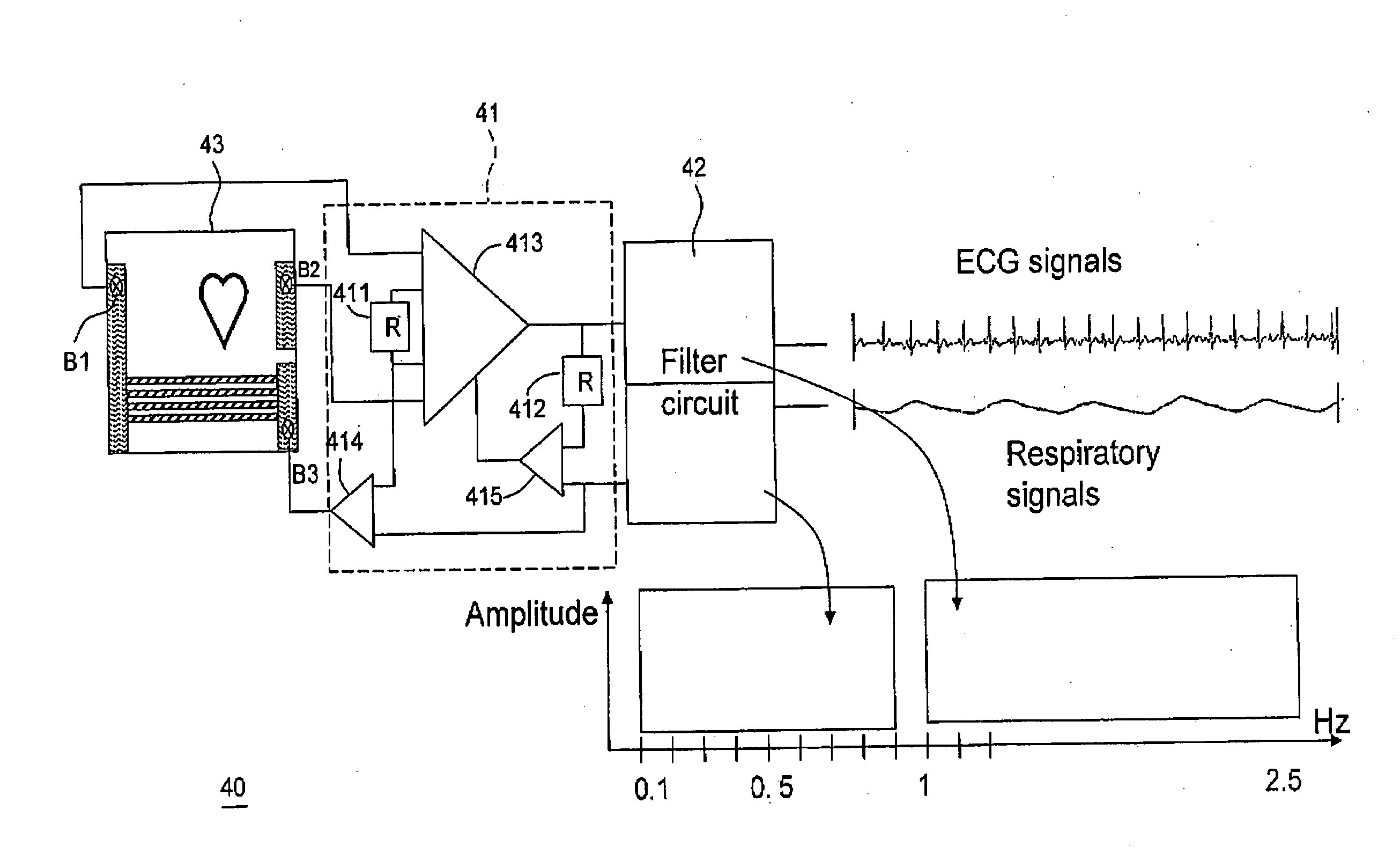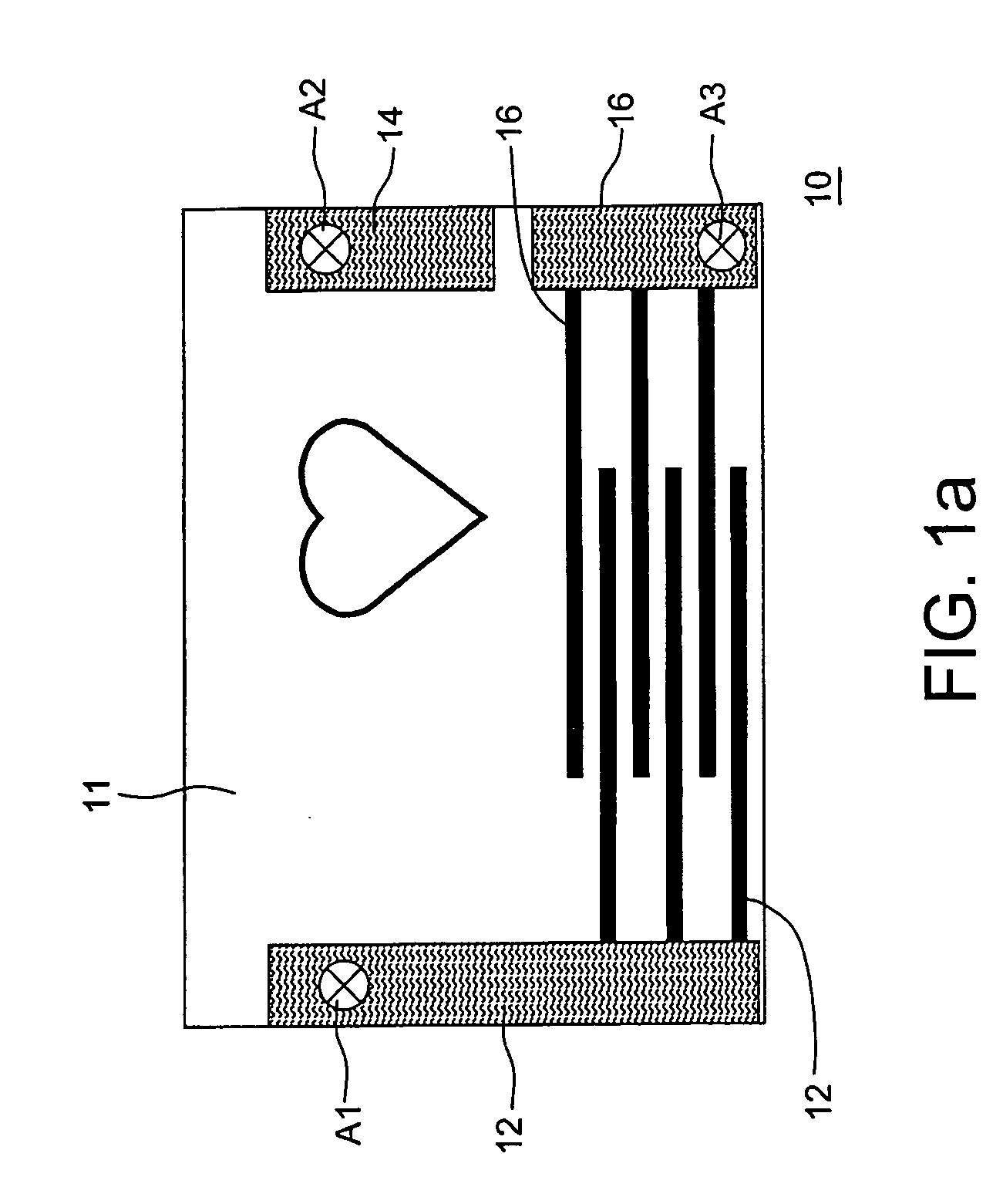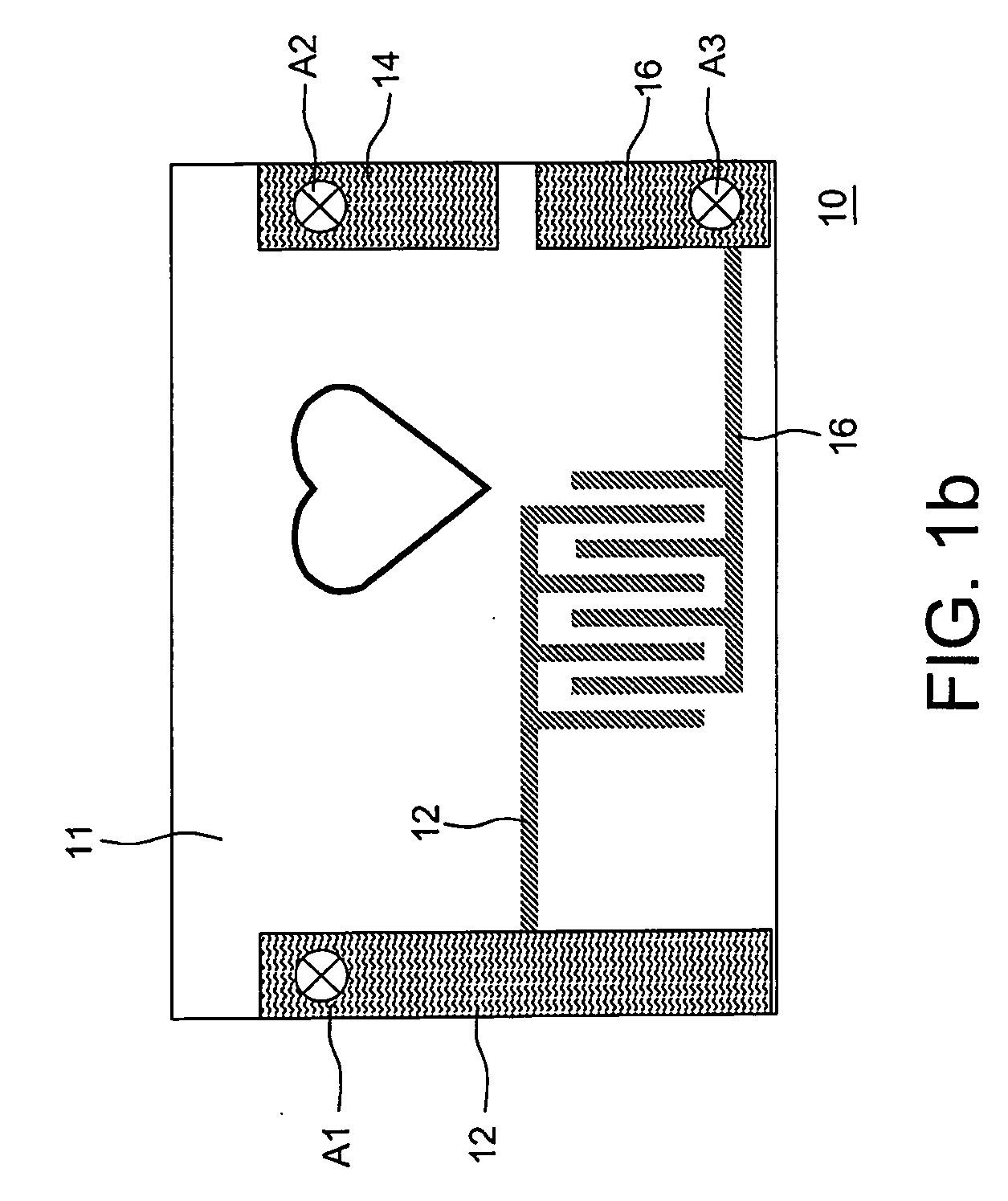Textile structure for detecting body surface electrical signals of human and signal detector using the same
a technology of body surface electrical signals and textile structures, applied in the field of textile structures for detecting body surface electrical signals of human and signal detectors, can solve the problems of difficult design of optical fibre conversion circuits, and inability to detect the self inductance of metal lines
- Summary
- Abstract
- Description
- Claims
- Application Information
AI Technical Summary
Benefits of technology
Problems solved by technology
Method used
Image
Examples
first embodiment
[0022]Referring to FIGS. 1a and 1b, a textile structure 10 for detecting body surface electrical signals of human according to a first embodiment of the present invention is shown. The textile 10 includes a non-conductive textile 11, a conductive textile, and test terminals A1-A3.
[0023]The non-conductive textile 11 covers the human body. Particularly, the non-conductive textile 11 covers human body parts that heaving with breathing, such as breast and abdomen.
[0024]The conductive textile is formed on the non-conductive textile 11. The conductive textile can be divided into three measurement regions, i.e., regions 12, 14, and 16. It should be noted that, the extended parts of the regions 12 and 16 are interdigitated into but not electrically coupled to each other. As shown in FIG. 1a, the extended parts of the regions 12 and 16 are horizontally extended. As shown in FIG. 1b, the extended parts of the regions 12 and 16 are vertically extended. Additionally, the extended parts of the r...
second embodiment
[0035]Referring to FIG. 2, a textile structure 20 for detecting body surface electrical signals of human according to a second embodiment of the present invention is shown.
[0036]As shown in FIG. 2, the textile structure 20 includes a non-conductive textile 21, a good-conductive textile, test terminals B1-B3, and a high-resistance conductive textile 22. The textile structure 20 is formed, for example, by knitting.
[0037]The non-conductive textile 21 covers the human body. Particularly, the non-conductive textile 21 covers human body parts that heaving with breathing, such as breast and abdomen.
[0038]The good-conductive textile is coupled to the non-conductive textile 21. The coefficient of resistance of the good-conductive textile is less then 50 Ω / cm. The good-conductive textile at least has regions 23, 24, and 25. The test terminal B1 is coupled to the region 23 of the good-conductive textile. The test terminal B2 is coupled to the region 24 of the good-conductive textile. The test ...
third embodiment
[0043]Referring to FIG. 3, a textile structure 30 for detecting body surface electrical signals of human according to a third embodiment of the present invention is shown.
[0044]As shown in FIG. 3, the textile structure 30 includes a non-conductive textile 31, a good-conductive textile, test terminals C1-C3, and a high-resistance conductive textile 32. The textile structure 30 is formed, for example, by tatting. The good-conductive textile includes regions 33-35.
[0045]The composition of the textile structure 30 and the principle of using the same for measuring heartbeat and respiratory signals are substantially similar to those of the textile structure 20 in the second embodiment and will not be repeated herein.
PUM
 Login to View More
Login to View More Abstract
Description
Claims
Application Information
 Login to View More
Login to View More - R&D
- Intellectual Property
- Life Sciences
- Materials
- Tech Scout
- Unparalleled Data Quality
- Higher Quality Content
- 60% Fewer Hallucinations
Browse by: Latest US Patents, China's latest patents, Technical Efficacy Thesaurus, Application Domain, Technology Topic, Popular Technical Reports.
© 2025 PatSnap. All rights reserved.Legal|Privacy policy|Modern Slavery Act Transparency Statement|Sitemap|About US| Contact US: help@patsnap.com



